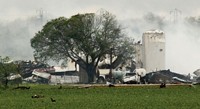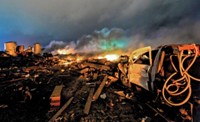Advertisement
Grab your lab coat. Let's get started
Welcome!
Welcome!
Create an account below to get 6 C&EN articles per month, receive newsletters and more - all free.
It seems this is your first time logging in online. Please enter the following information to continue.
As an ACS member you automatically get access to this site. All we need is few more details to create your reading experience.
Not you? Sign in with a different account.
Not you? Sign in with a different account.
ERROR 1
ERROR 1
ERROR 2
ERROR 2
ERROR 2
ERROR 2
ERROR 2
Password and Confirm password must match.
If you have an ACS member number, please enter it here so we can link this account to your membership. (optional)
ERROR 2
ACS values your privacy. By submitting your information, you are gaining access to C&EN and subscribing to our weekly newsletter. We use the information you provide to make your reading experience better, and we will never sell your data to third party members.
Safety
Panel Calls For Safer Processes
Federal Report: Task force stops short of recommending inherently safer technology mandate
by Glenn Hess
June 16, 2014
| A version of this story appeared in
Volume 92, Issue 24
Federal agencies should take steps to encourage chemical facilities to use alternatives to hazardous chemicals and processes wherever feasible. But the government should not require the adoption of so-called inherently safer technology (IST), an interagency task force concludes in a June 6 report.
The report responds to a directive that President Barack Obama issued in August 2013 after a series of catastrophic incidents, including a deadly ammonium nitrate explosion in West, Texas, earlier that year. Obama ordered a team of federal officials to recommend ways to improve the safety and security of chemical facilities.
The task force, which included top officials from the Environmental Protection Agency and the Occupational Safety & Health Administration, recommends that, within one year, EPA and OSHA begin working on voluntary guidelines for facility operators on how to integrate IST into their process safety programs.
Many companies, the report notes, “may be unaware of existing inherent safety practices.” These practices include reducing the quantity of hazardous substances stored or used at a facility or replacing them with less toxic, reactive, flammable, or explosive alternatives.
Neither EPA nor OSHA should force chemical facilities to adopt any “specific technology, design, or process,” the report states. But it recommends that the agencies consider requiring companies to analyze and document whether alternative measures and safety techniques could reduce the risk in their operations.
Chemical makers have long opposed a federal mandate to assess or implement any IST measure, arguing that process safety decisions should be left to facility operators.
A variety of existing federal programs already require facilities to make their operations as safe and secure as possible, a spokesman for the American Chemistry Council, an industry lobbying group, tells C&EN. Rather than creating an “unnecessary layer of duplicative requirements,” the focus should be on improved enforcement of existing regulatory standards, he says.
But activists maintain that tough new regulations are needed. “If the Obama Administration is serious about protecting workers and communities, the President must stand up for prevention requirements that include safer chemicals and processes,” says the Coalition to Prevent Chemical Disasters, which represents more than 100 environmental, labor, and public health organizations.




Join the conversation
Contact the reporter
Submit a Letter to the Editor for publication
Engage with us on Twitter